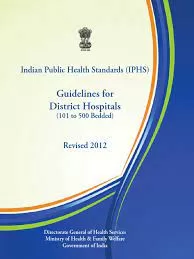July 9, 2024 — In a significant shift from traditional metrics, a new framework by the European Association for the Study of Obesity (EASO) urges healthcare professionals to consider factors beyond Body Mass Index (BMI) when diagnosing and managing obesity. The statement, published in Nature Medicine on July 5, outlines an algorithm incorporating BMI, fat accumulation, and a clinical assessment covering medical, functional, and psychological domains.
A Comprehensive Approach to Obesity
The consensus-based statement introduces 28 guidelines addressing clinical staging and diagnosis, pillars of treatment, therapeutic targets, and initial intervention levels. “The incidence and prevalence of obesity remains on the rise globally. Despite the wide recognition of obesity as a multifactorial, complex, chronic disease, clinical recommendations that guide the diagnosis and management of obesity are not aligned with clinical processes normally adopted for other chronic diseases,” the authors said. They emphasized the urgent need for a new framework that aligns with the concept of obesity as an adiposity-based chronic disease, highlighting the importance of considering abdominal fat accumulation along with medical, functional, and psychological impairments.
Key Changes in Diagnostic Criteria
The framework suggests several innovative approaches, including the use of the waist-to-height ratio instead of just waist circumference. It also lowers the BMI cutoff to ≥ 25 kg/m² combined with a waist-to-height ratio > 0.5, recognizing the risk of complications associated with lower BMI in adults of European descent.
“This is a very concise, straightforward document,” said W. Timothy Garvey, MD, professor and director of the University of Alabama Diabetes Research Center. “You stage the disease and treat according to how sick the patient is, which means the severity of their complications.”
New Recommendations for Screening and Treatment
Among the notable recommendations is the assessment of sarcopenic obesity and regular screening for obesity-related cancers. The framework also suggests considering the use of obesity medications for adults with a BMI ≥ 25 kg/m² and a waist-to-height ratio > 0.5, provided there are associated medical, functional, or psychological impairments.
Pillars of Treatment and Future Guidelines
Seven of the 28 statements focus on long-term, multidisciplinary management, including behavioral modification, psychological therapy, obesity medications, and bariatric surgery. The framework advocates prescribing medications as an adjunct to behavioral modification, adhering to approved labeling, but also considering lower BMI thresholds under certain conditions.
Challenges and Future Directions
While the document sets a new standard, it lacks detailed treatment guidelines and does not address social determinants of health or weight stigma. Garvey pointed out the need for ongoing research to refine treatment hierarchies and develop comprehensive therapeutic algorithms.
“The refinement of obesity diagnosis is under construction. We anticipate that this new framework will contribute to improving obesity management for adults with obesity,” the authors noted.
The document also aims to reduce the practice of online mail-order pharmacy prescriptions without proper clinical evaluations, promoting a more thorough and patient-centric approach to obesity care.
Disclosure of Interests
The authors disclosed personal funding and advisory roles with pharmaceutical companies, highlighting the importance of transparency in medical research and guideline development.
Conclusion
The new EASO framework represents a pivotal step in advancing obesity management, promoting a holistic approach that moves beyond BMI to consider a wider range of health factors. As the medical community continues to refine obesity care, this framework provides a foundation for developing more detailed guidelines that can improve patient outcomes and quality of life.












